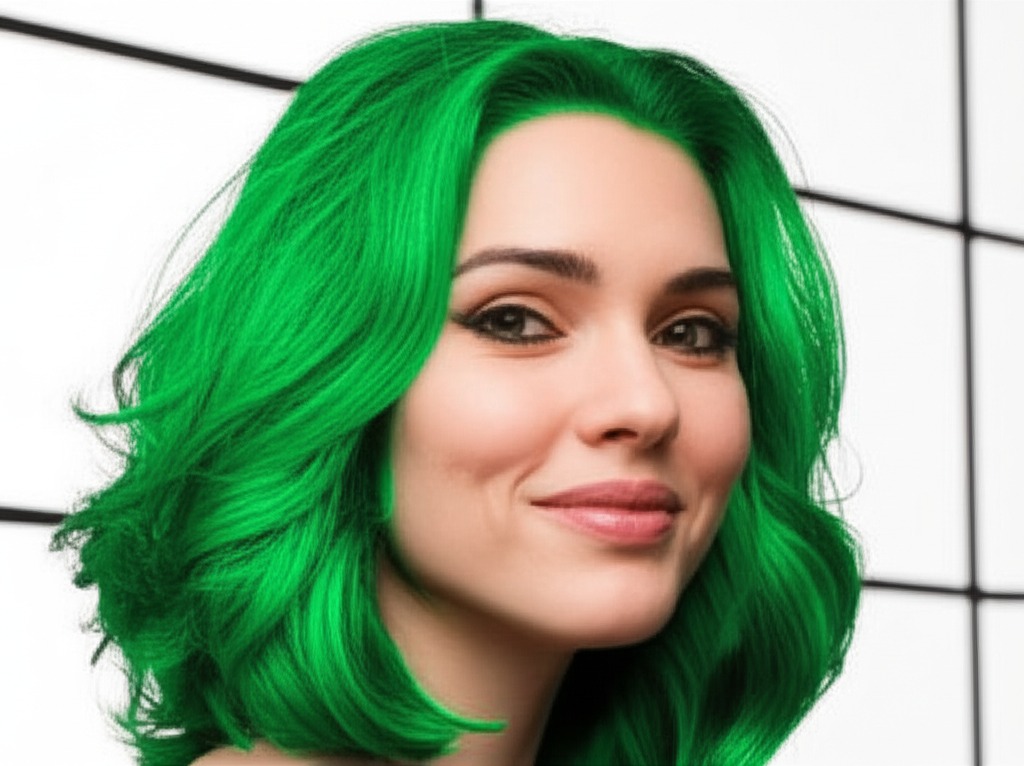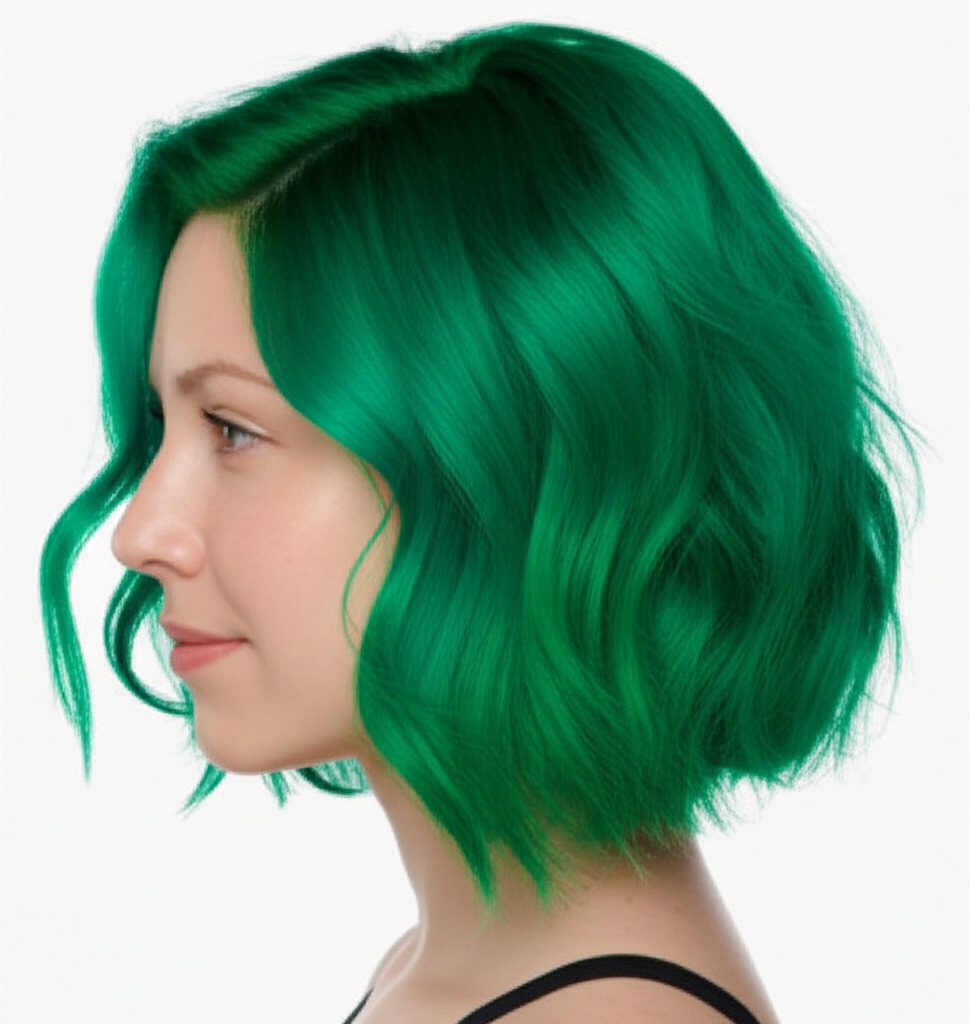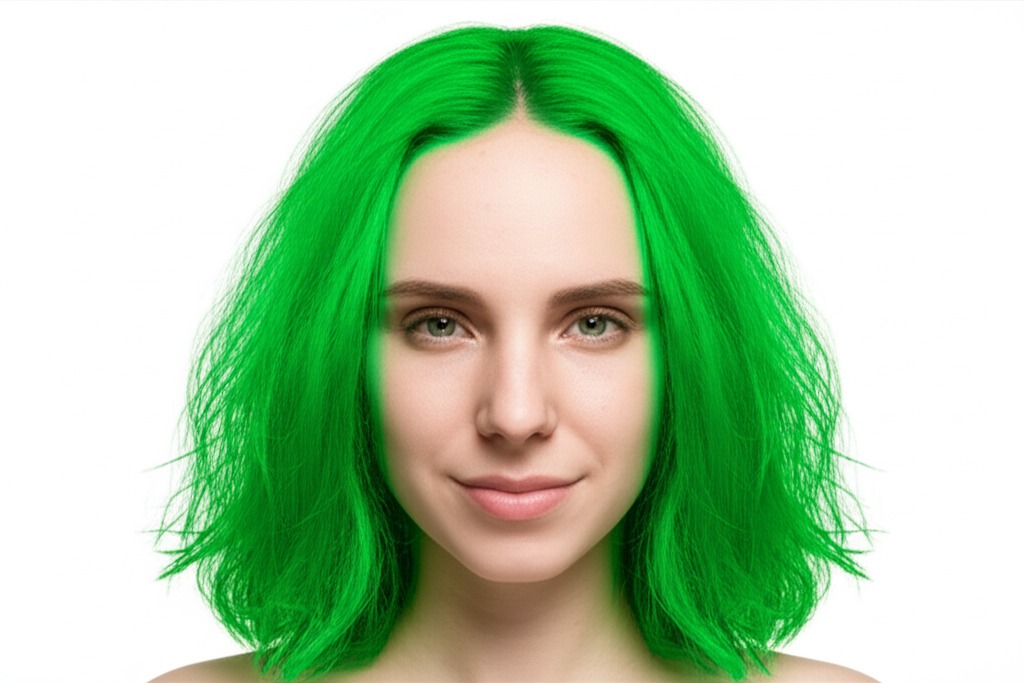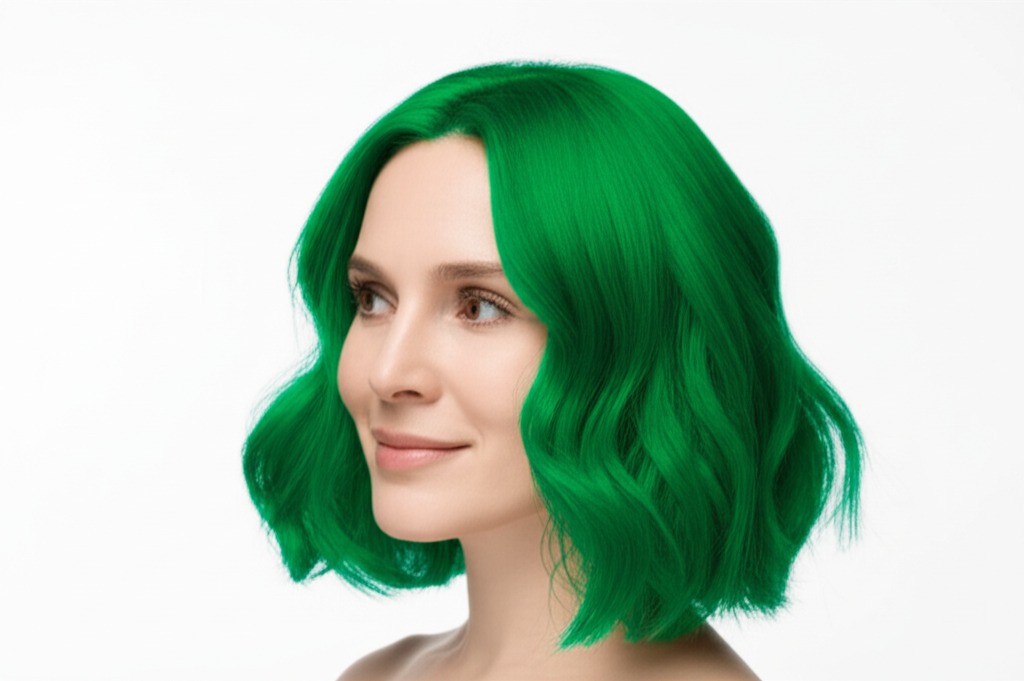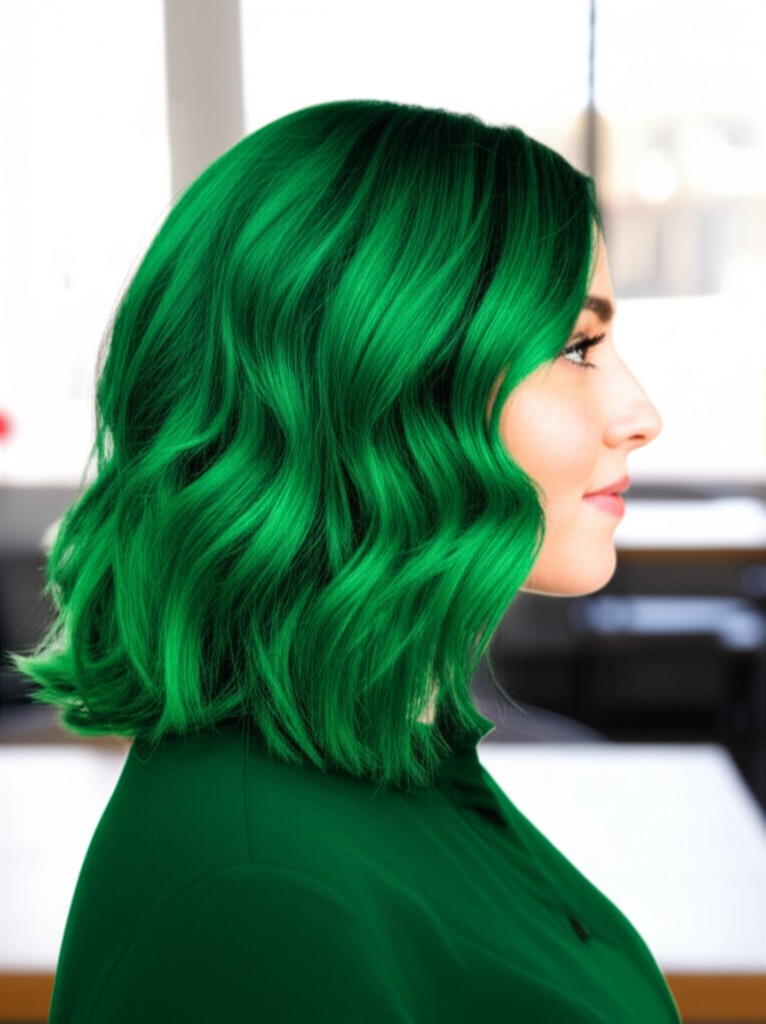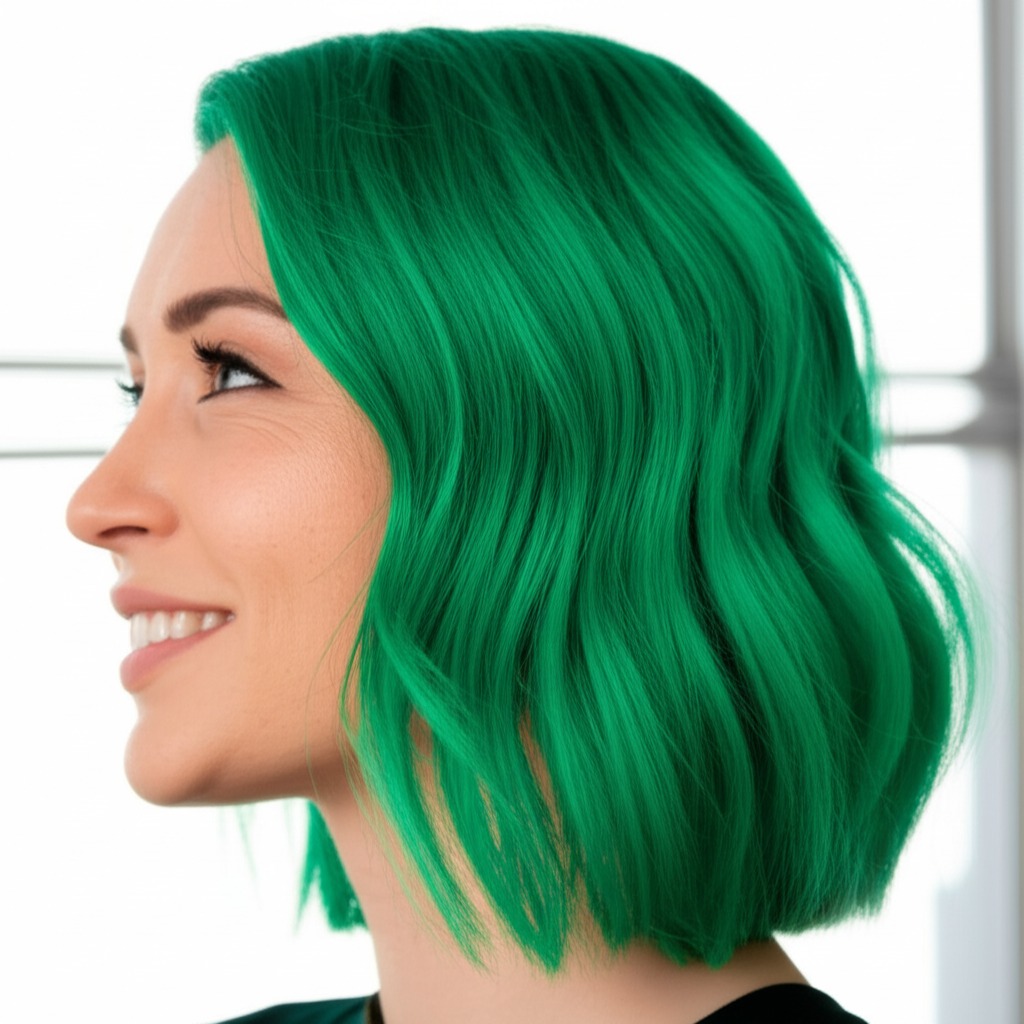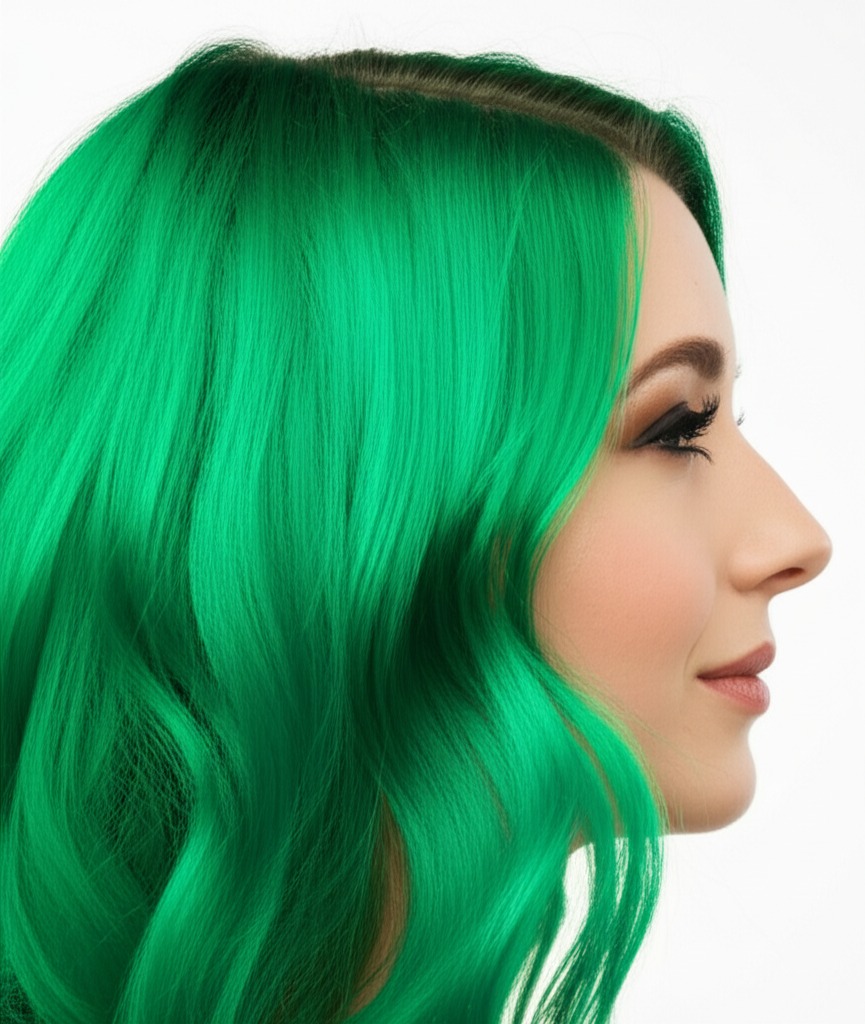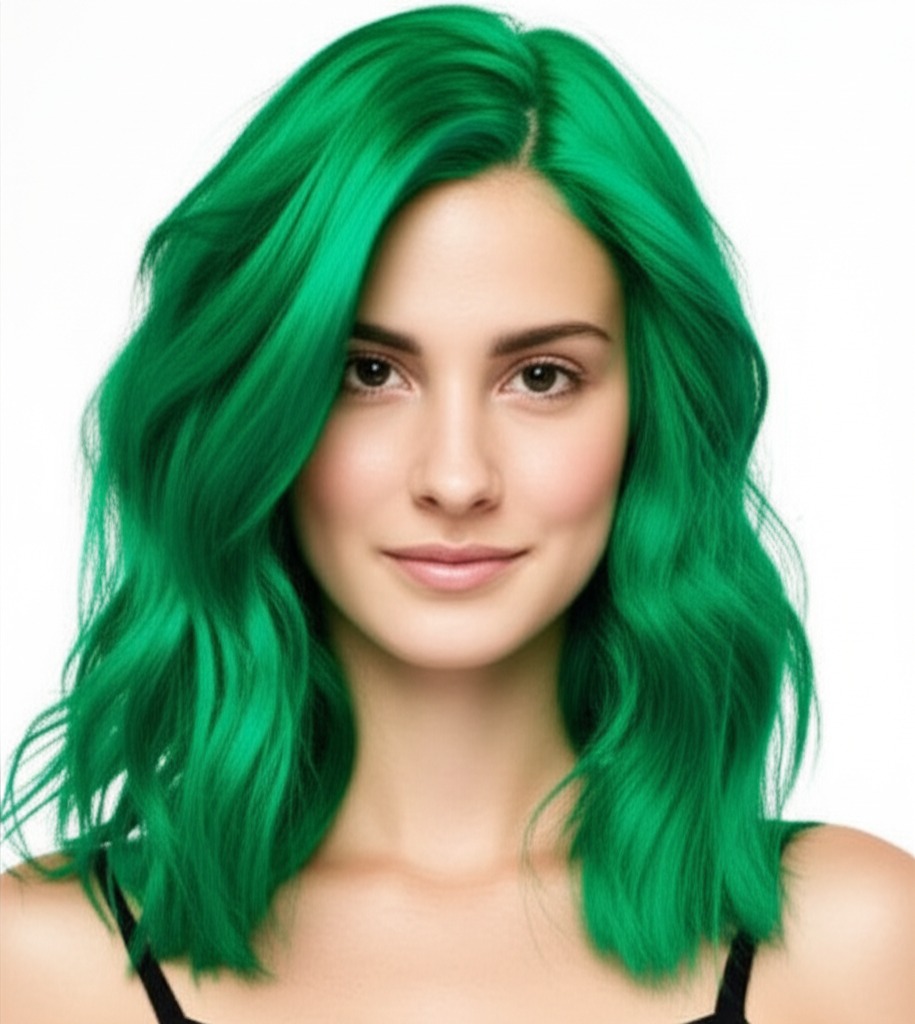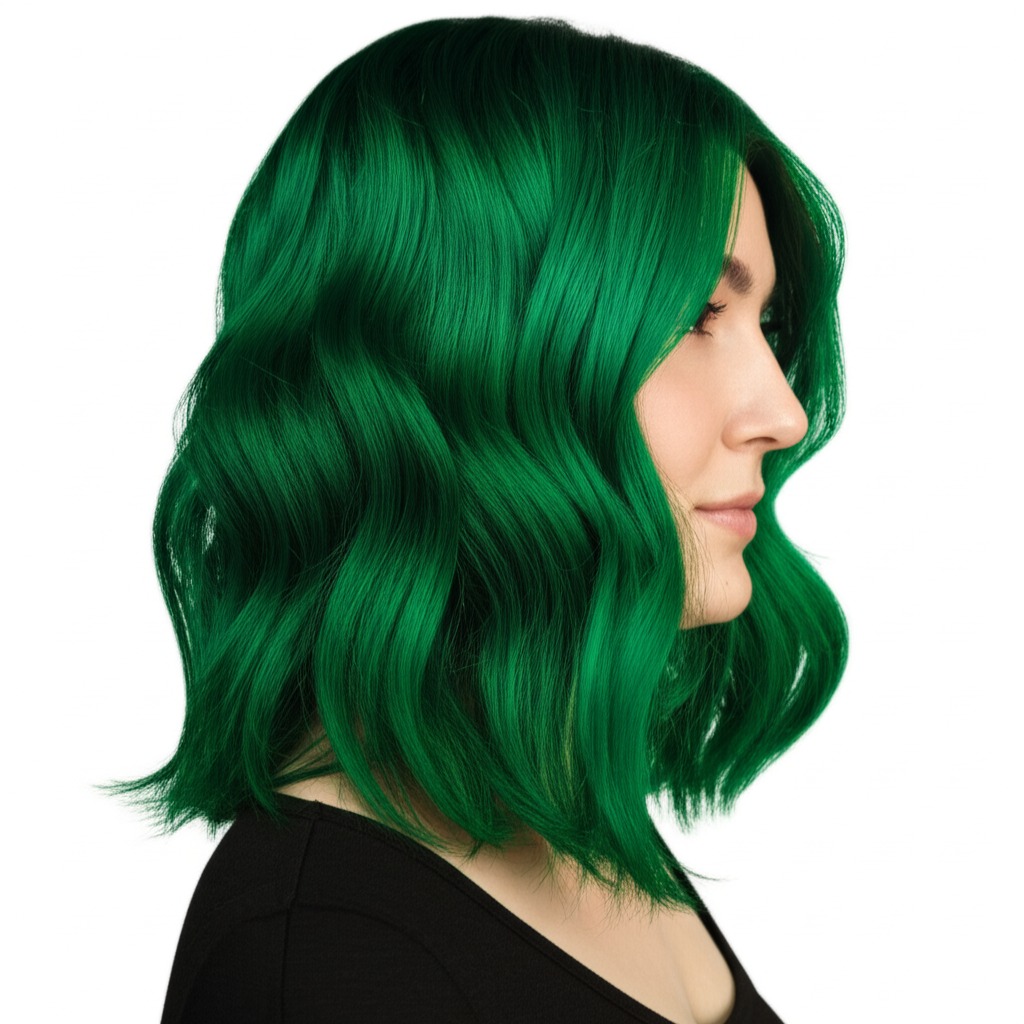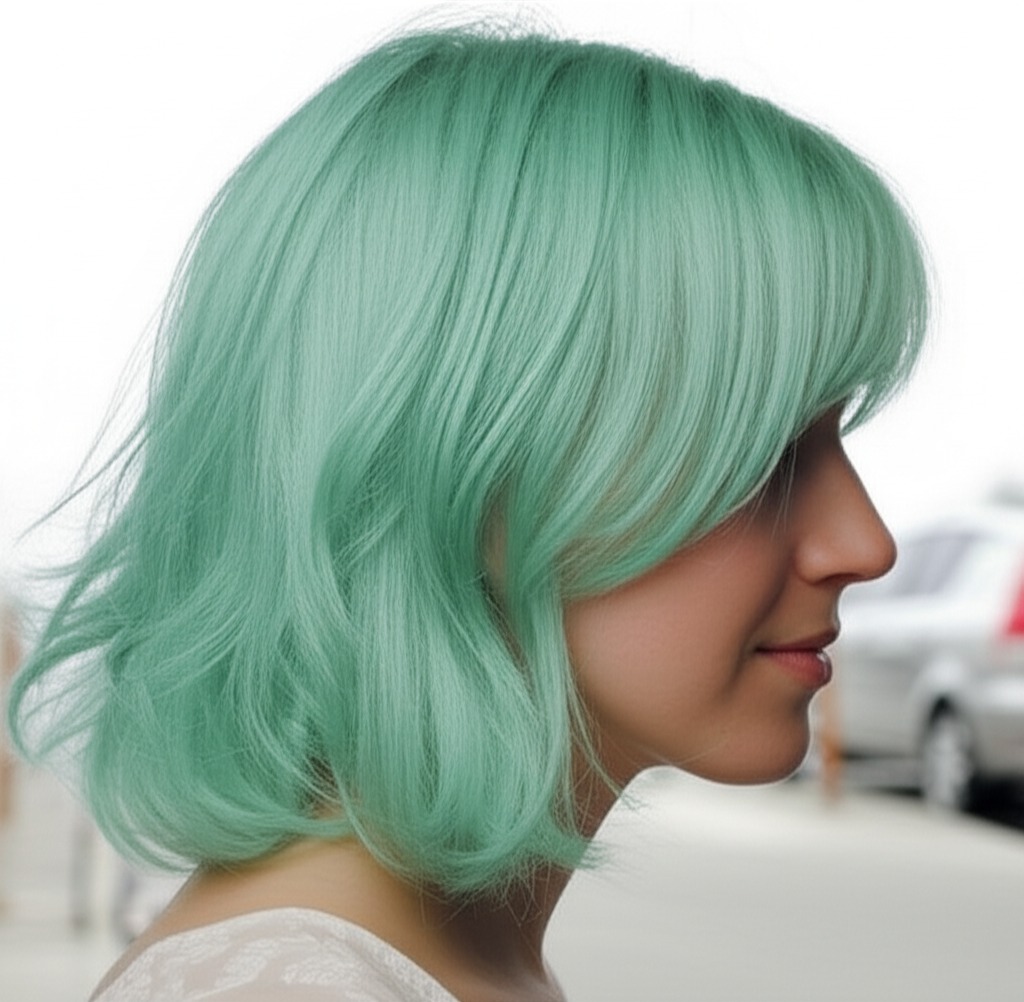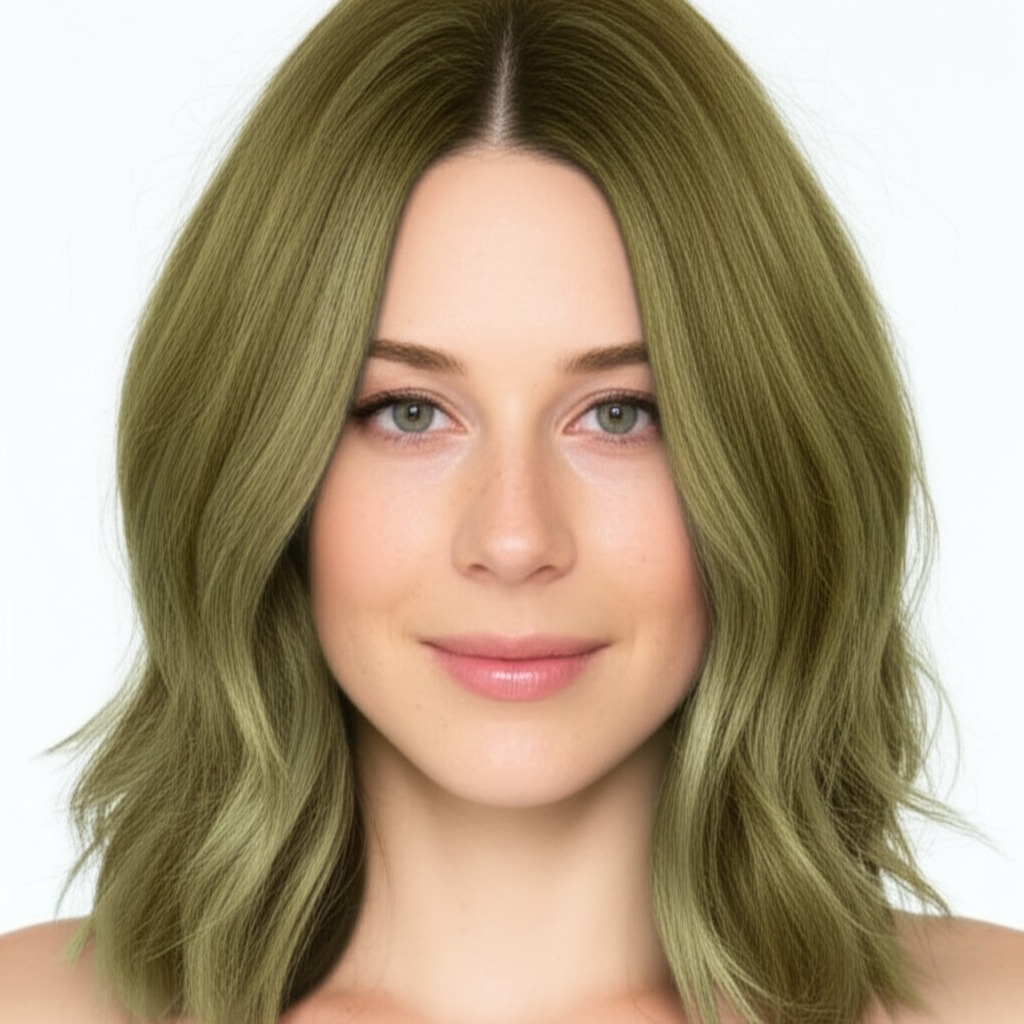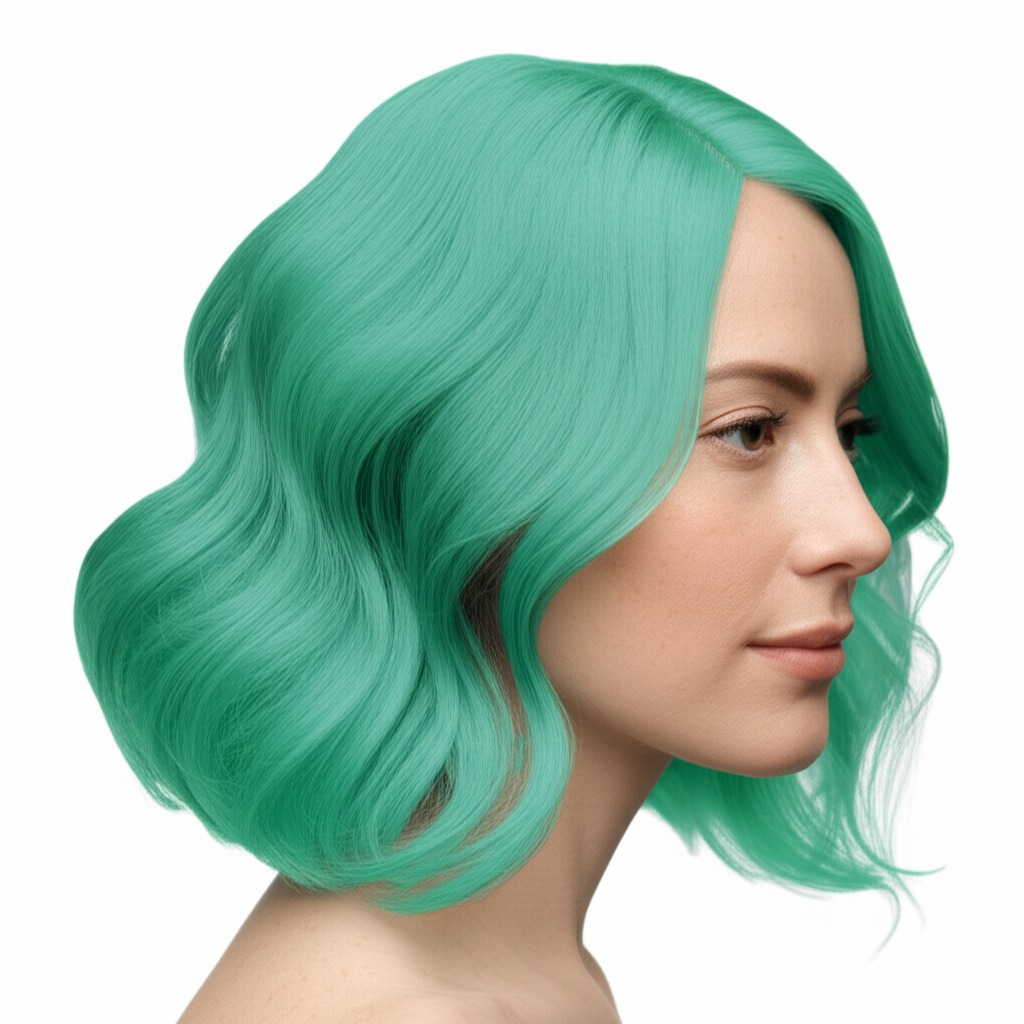#Dive into Emerald Green Hair Color: A Guide for Gorgeous Results
Emerald green hair is a bold statement – think lush forests, precious gemstones, and an undeniable air of confidence. It's more than just "green" hair; it’s about capturing a specific mood and aesthetic. This guide will break down everything you need to know to achieve (and maintain!) stunning emerald green locks, regardless of your starting point or lifestyle.
#1. Understanding the Emerald Green Shade
Emerald green isn't one-size-fits-all. It has nuances that affect how it looks on different people:
- Undertone: The most crucial aspect! True emerald leans cool. This means it contains blue and/or violet undertones. Warm greens (more yellow or gold) can look muddy or brassy on many skin tones, so cool is key for a vibrant result.
- Depth (Levels): Hair color levels range from 1 (blackest black) to 10 (lightest blonde). Emerald green typically looks best on hair that's already lightened to at least a level 7-9. The darker your starting point, the more lifting required – and potentially, the less vibrant the final emerald will be. A deeper emerald might work on a level 6 with significant lightening, but it’s much harder to achieve.
- Variations: You'll see variations like:
- Jewel Emerald: The most intense, true-to-gemstone green. Requires the lightest base.
- Forest Emerald: A slightly softer, more muted emerald with a touch of grey or mossy undertones. Can work on slightly darker bases.
#2. Who Does Emerald Green Flatter?
While bold, emerald can be surprisingly flattering! Here’s how to determine if it's right for you:
- Skin Tone & Undertone: Cool skin tones (pinkish or bluish undertones) are the ideal canvas. Think fair, cool-toned beige, olive skin with blue/green hues, and even deeper complexions with a noticeable coolness. If your skin is warm (golden, peachy), emerald can make you look washed out unless it's expertly balanced by a stylist who understands color theory.
- Eye Colors: Emerald green really pops against brown eyes! It also complements hazel eyes beautifully, enhancing their natural flecks of green and gold. Blue or grey eyes can work, but the contrast needs to be carefully considered – too much intensity might overwhelm your features.
- Natural Level Starting Point: As mentioned earlier, lighter is better. Ideally, aim for a level 7-9 (light blonde). Darker hair will require significant bleaching which impacts hair health and color vibrancy. Be realistic about what's achievable without compromising the integrity of your hair.
#3. Technique Options: From Subtle to Statement
The application technique dramatically alters the final look:
- Single Process: A full, solid color application. Best for those already at a light level or willing to undergo significant lightening. Delivers maximum impact but can be less forgiving with root growth and requires more frequent touch-ups.
- Highlights/Lowlights: Adds dimension! Emerald highlights on a darker base create an intriguing peekaboo effect. Lowlights (darker green) add depth and soften the overall look.
- Babylights: Super fine, delicate highlights that mimic natural sun-kissed streaks. A subtle way to introduce emerald without a drastic change.
- Gloss/Toner: Used after lightening to refine the tone of your hair and boost vibrancy. Essential for achieving that true emerald hue – it neutralizes brassiness and adds depth. Can also be used periodically to refresh existing color.
- Balayage-Effect vs Solid: Balayage (hand-painted highlights) creates a softer, more natural transition with less harsh lines. A solid application provides uniform coverage for maximum impact.
#4. Maintenance & Longevity: The Real Talk
Emerald green is not a “set it and forget it” color. Be prepared!
- Wash Frequency: Limit washes to 2-3 times per week using cool water (hot water fades color faster).
- Toner Refresh: Expect to tone your hair every 4-6 weeks, especially with lighter bases. This maintains the emerald hue and prevents brassiness.
- Root Growth Pacing: Solid colors show root growth quickly. Consider strategically placed highlights or balayage to blend regrowth more seamlessly.
- Budget/Time Planning: This is a significant investment! Expect salon visits every 6-8 weeks (or sooner) for color touch-ups and toning. The initial process can take several hours, especially if lightening is required. Budget accordingly – it's often $200+ depending on location and stylist expertise.
#5. Seasonality & Pairing with Cuts: Finding Your Vibe
- Seasonal Tweaks: Emerald green shines in fall and winter when richer tones are more appealing. In spring/summer, consider adding a touch of pastel or softening the shade slightly for a lighter feel.
- Cut Pairings:
- Bob/Lob: A sharp bob or lob accentuates the boldness of emerald.
- Long Layers: Creates movement and dimension, allowing the color to truly shine.
- Pixie Cut: A daring choice! Emerald on a pixie can be incredibly chic but requires confidence and regular trims.
- Event/Occasion Picks:
- Work: A muted forest emerald with balayage is more professional than a jewel-toned solid application.
- Daytime: Soften the shade with lighter layers or babylights for a less intense look.
- Evening: Jewel emerald shines! Embrace the boldness and let your hair be the statement piece.
- Weddings: Consider a softer, more romantic version of emerald – think mossy undertones and subtle highlights.
#6. At-Home Care: Protecting Your Investment
- Sulfate-Free Shampoo: Essential to prevent color fade! Sulfates strip away natural oils and lift pigment from the hair shaft.
- Clarifying Cadence: While sulfate-free is key, occasional clarifying shampoos (every 4-6 weeks) remove buildup from styling products – but use sparingly as they can also affect color vibrancy.
- Heat Protection: Always use a heat protectant spray before using any hot tools (blow dryers, straighteners, curling irons). Heat speeds up color fade and damages hair.
- Color-Safe Styling Tips: Opt for gentle styling products designed for colored hair. Avoid harsh chemicals and excessive sun exposure.
- Product Checklist: Sulfate-free shampoo & conditioner, heat protectant spray, leave-in conditioner (especially important if lightening), color-depositing gloss or mask (for maintenance).
#7. Common Pitfalls: Avoiding Color Catastrophes
- Brassiness: The biggest enemy! Cool toners are your best friend.
- Banding: Uneven color distribution, often caused by improper application technique. Choose an experienced stylist who understands layering and foil placement.
- Patchiness: Occurs when the lightening process isn’t even. A strand test is crucial to assess how hair lifts.
#8. Pros & Cons: Weighing Your Options
Pros:
- Striking and unique look
- Can enhance skin tone and eye color
- Versatile with different cuts and styling options
Cons:
- High maintenance (frequent toning, touch-ups)
- Significant fade risk if not properly cared for
- Expensive investment in salon visits & products
- Requires a lighter base – potential damage from bleaching.
#9. Salon Consultation Script: Setting Expectations
Before committing, have an open and honest discussion with your stylist! Here are some prompts to guide the conversation:
- “I’m interested in emerald green hair color. Can you assess my natural level and determine if it's achievable without excessive damage?”
- "What technique would you recommend based on my hair type, texture, and desired look?"
- "How often will I need to come back for touch-ups and toning?"
- “Can we do a strand test to ensure the color takes properly and avoid any unexpected results?”
- "What at-home care products do you recommend to maintain the vibrancy of my emerald green hair?"
#10. FAQs: Your Emerald Green Questions Answered
- Can I go emerald green directly from black hair? No, it’s extremely difficult and damaging. Significant lightening is required, which can compromise hair health.
- How long does emerald green last? The color itself will fade within 4-6 weeks (or sooner), but the vibrancy diminishes faster without regular toning.
- Is emerald green suitable for all hair textures? Yes! It looks stunning on straight, wavy, curly, and coily hair – the application technique should be adapted to suit your texture.
- Can I do this at home? While possible, it’s highly recommended to see a professional stylist, especially if significant lightening is needed. The risk of damage and uneven results is high with DIY attempts.
- What happens if my emerald green turns brassy? Use a purple-toned toner to neutralize the yellow/orange tones and restore the cool emerald hue.
- Can I lighten my hair multiple times for a brighter emerald? Repeated lightening weakens hair significantly. Discuss alternatives like glossing or adjusting your expectations with your stylist.
Embracing emerald green is an exciting journey! With careful planning, realistic expectations, and dedicated aftercare, you can rock this stunning shade with confidence and achieve truly breathtaking results.
